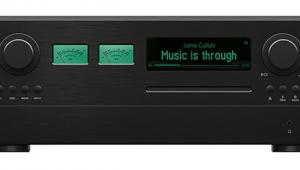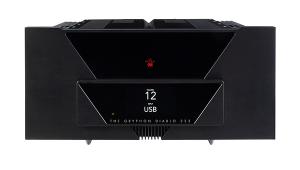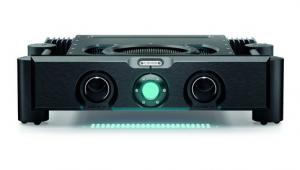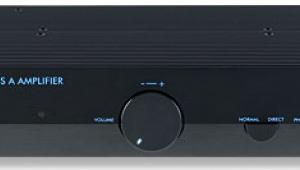Devialet 170 (£6390, £7390 With Air)

When Devialet’s D-Premier was launched [HFN Apr ’10] it appeared to offer everything – tremendous power, direct digital inputs and a uniquely slim form factor. Its beautiful industrial design was matched by the elegance of its technology, a hybrid of Class A voltage amplification with precision digital Class D current dumpers.
Devialet first chose to implement HDMI as the digital interface of the future. But now we all know that USB is digital audio’s all-conquering interface. A change to the D-Premier’s real estate was inevitable, its inputs reshaped along with refinements to every facet of the amplifier’s layout, from switchmode power supply to its DSP core. The 170 is just one of three new amplifiers all equipped with those vital, future-proof USB and RJ45 ethernet connections. It has Devialet’s AIR Wi-Fi module as a £1000 option and is built into new alloy casings that look slimmer still. In part this is a clever illusion, the Wi-Fi antenna now moved from the top surface into two bays within a deeper, black-coated alloy baseplate, while its dark chrome is more durable than the old finish.
Once again, the rear of the case breaks away to reveal a compact collection of inputs and outputs while the hallmark circular display is retained as your window on to the 170’s world. Devialet’s new RF remote control is also both lighter and slimmer but features the same three function buttons.
The new USB port is a Type B socket, so there’s no facility to host USB sticks or drives. However, there’s talk of the amplifier’s SD card reader also being enabled to carry high-res music files. Nevertheless, all new Devialet amplifiers will now connect directly to your computer or home network, including wireless access where the AIR module is fitted.
A chip off the old block?
So is the 170 ‘better’ than the D-Premier? The glib answer might be to suggest the 170 is simply a chip off the ADH block, with better bass control, more insight and transparency. But it’s so much more.
With USB our preferred choice, and beta PC drivers working flawlessly, the 170 wove its addictive spell. Whether enjoying ‘Hotel California’ from The Eagles’ 1994 live set Hell Freezes Over [Geffen], the 24-bit render of The Beatles’ Abbey Road album or Emily Barker & The Red Clay Halo’s Dear River [Linn], the 170 ‘connected’ those files to the speakers with complete mastery over their content.
Like the D-Premier, the 170 grips the loudspeaker with such unerring confidence that the boxes fade from view and the music lives and breathes in front of you. Cymbal strikes are free of splashy overhang, powerful bass rhythms are delivered with a palpable thunder and massed strings stride into the room with a vivid presence and colour.
Devialet’s 170 has a luxuriant smoothness that extends from the deepest bass to the brightest treble, to voices and brass, to solo guitar and orchestral swells, to live or studio recordings.
Listening to Charlie Haden & John Taylor’s Nightfall at 192kHz/ 24-bit [Naim], we were struck by the sheer silence of the background. Then there was the 24-bit Abbey Road remaster, ‘Come Together’ sounding ‘all of a piece’, the resonant grunge of Harrison’s guitar and Starr’s drums laid bare with a sense of spaciousness and atmosphere that was barely creditable. Here was a liquid smoothness in action – not only rare but perhaps unique to the brand.
With the movie soundtrack from ‘The Day After Tomorrow’ [Varèse Sarabande] the Devialet 170 squeezed what appeared to be near-subsonic bass from our B&W 802s, but with a definition so robust you could saw it into 10ft lengths and use it for scaffolding.
Verdict
Devialet has taken its revolutionary D-Premier amplifier, added all-important USB and network connections while refining just about every facet of the internal engineering solution. The result is a spectacular success. The best has just became more affordable too.
Originally published in the 2013 Yearbook

























































